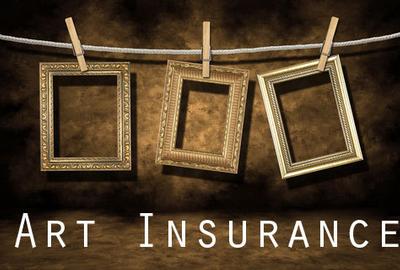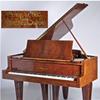Ed Ruscha: Understanding His Words
- August 01, 2014 10:29
Pop Art was one of the defining modern movements of the 1950s and 1960s. The driving force is that anything can be art. There is no right and wrong, no high and low culture. In fact, modern culture and advertisements were embraced. Some of the most recognizable features of Pop Art is the isolation of common objects and images. Warhol’s paintings of soup cans and Lichtenstein lifting comic panels out of context came to define this movement. In the late 50s, Artist Ed Ruscha took another approach. He examined words.
Ruscha once commented that he had appreciation for misspellings on signs. He viewed it as a type of art in itself. At the start of his career he crafted collages similar to his colleagues. He gradually began to examine words and explore unconventional materials such as gun powder. Check out this short video from the SFMOMA with Ed Ruscha talking about working with gun powder. (http://www.sfmoma.org/explore/multimedia/videos/189)
Growing as an artist, he became more refined and began isolating words. Many have tried to divine messages from Ruscha’s collection of words, however Ruscha was not as interested in the meanings of the words. Words such as woo, stop, and boss were chosen for their shapes. However, these are not shallow representations. There is a subtle metaphor in each work.
In 1968, Ed Ruscha created two paintings of the word lisp. One was done in a wet splatter, as if the speaker unintentionally spat while saying it. The other features the word in flowing cursive. The word is written as a curving ribbon hovering over a tan surface. The movement of the letters and spacing is similar to the sound of the word. The viewer can hear the lisping within the work.
Ruscha has gained a following in high places. One piece titled I Think I’llwas chosen by President Obama to hang in the White House. I Think I’ll is a representation of the racing thoughts a person has before a decision needs to be made. The words weave in and out of a streaked sunset. The phrase “I think I’ll” dominates the canvas. Other words group around it. “Maybe…yes…” and “maybe…no…” are the most predominate. In the corner and barely seen is the word “yet.” It rings of possibility.
These observations on words as art is both intriguing and lush. Ed Ruscha provides a new perspective on the tool we use every day – language.





















![Peter Paul Rubens (Flemish, 1577–1640), After Titian (Tiziano Vecelli) (Italian [Venetian], c. 1488–1576), Rape of Europa, 1628–29. Oil on canvas, 71 7/8 x 79 3/8 in. Peter Paul Rubens (Flemish, 1577–1640), After Titian (Tiziano Vecelli) (Italian [Venetian], c. 1488–1576), Rape of Europa, 1628–29. Oil on canvas, 71 7/8 x 79 3/8 in.](/images/c/e2/2e/Jan20_Rape_of_Europa100x100_c.jpg)